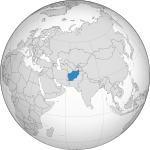Overview
Following an offensive that saw the Taliban take control of almost all districts previously held by the government, the Taliban entered the capital Kabul on 15 August and consolidated their power in Afghanistan. President Ghani and key government officials had fled the country and the Afghanistan government collapsed. The Taliban have nominated some of their members to form a government and have been in communication with a ‘coordination council’ formed by Afghan leaders to manage the transfer of power ?. Despite the Taliban’s taking control of much of the country, other resistance and armed groups started to challenge their authority ?. Uncertainties remain regarding the future of Afghan government and what form of Shariah law the Taliban intend to implement.
More than 409,000 people have been newly internally displaced by the conflict between the Taliban and Government forces and the Taliban’s territorial expansion from May-August. Assessments and response are underway but humanitarians have limited capacity and national staff. Unified policies on humanitarian aid are not yet known, though Taliban officials in some areas have already requested that aid operations continue ?. The Taliban’s rapid advancement has raised fear and uncertainty among the population. Although the group has made public claims of amnesty, inclusiveness, and moderation, there are protection concerns for women, minorities, people in rural areas, and those affiliated with foreign entities ?.
Afghanistan is prone to natural disasters, including drought and floods. The government had declared drought conditions on 22 June. Water resources are increasingly strained owing to below-average precipitation since October 2020. Drought has triggered internal displacement, decreased livelihood opportunities, and contributed to food insecurity ?. Flooding regularly affect various parts of Afghanistan, particularly northern and eastern areas. Around 27,000 people have been affected by flooding in 2021 as at end July ?.
Latest Developments
No recent significant humanitarian developments. The crisis is being monitored by our analysis team.
Key Figures
INFORM Global Crisis Severity Index
Crisis Severity: 4.5
Impact: 4.6
Humanitarian Conditions: 4.5
Complexity: 4.5
Access Constraints: 5
Information courtesy of ACAPS. https://www.acaps.org/
| Title | Uploaded |
|---|---|
| Western Region Site Management Task Force - Terms of Reference | 24 Sep 2018 |
16 Common Operating Datasets or CCCM-tagged datsets are on the Humanitarian Data Exchange:
- Afghanistan Displacement Data - Baseline Assessment [IOM DTM] - International Organization for Migration (IOM) - [2017-02-01T00:00:00 TO 2021-12-31T23:59:59]
- Afghanistan - Internally displaced persons - IDPs - IDMC - [2008-01-01T00:00:00 TO 2021-12-31T23:59:59]
- Whole of Afghanistan Assessment (WoAA 2021) dataset - REACH Initiative - [2021-08-04T00:00:00 TO 2021-09-30T23:59:59]
- Afghanistan: Humanitarian Needs Overview - Multiple Sources - [2017-01-01T00:00:00 TO 2022-12-31T23:59:59]
- Afghanistan - Subnational Administrative Boundaries - Afghanistan Geodesy and Cartography Head Office (AGCHO) - [2019-10-22T00:00:00 TO *]
- Afghanistan - Socio-economic assessment of IDPs and returnees in the five most populated settlements of Afghanistan's Herat Province - 2017 - UNHCR - [2017-01-01T00:00:00 TO 2017-12-31T23:59:59]
- Afghanistan - Subnational Population Statistics - National Statistic and Information Authority (NSIA) Afghanistan - [2021-01-01T00:00:00 TO 2021-12-31T23:59:59]
- Afghanistan - Socio-economic assessment of IDPs and returnees in the five most populated settlements of Afghanistan's Herat Province 2017 - Office of the High Commissioner for Refugees - [2017-01-01T00:00:00 TO 2017-12-31T23:59:59]
- Afghanistan - Socio-economic assessment of Pakistani refugees in Afghanistan's Khost and Paktika provinces 2017 - UNHCR - [2017-05-11T00:00:00 TO 2017-05-29T23:59:59]
- Afghanistan - Socio-economic assessment of IDPs and returnees in the five most populated settlements of Afghanistan's Herat Province 2017 - Office of the High Commissioner for Refugees - [2017-01-01T00:00:00 TO 2017-12-31T23:59:59]

